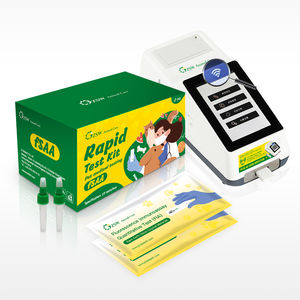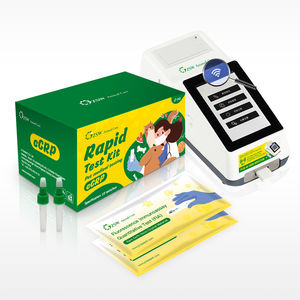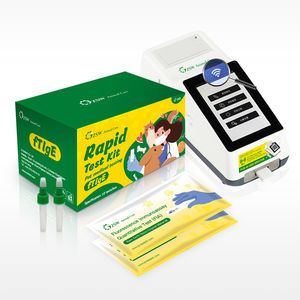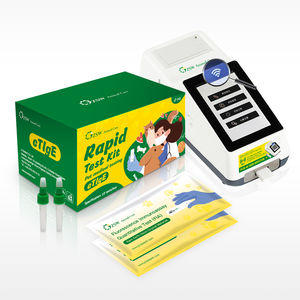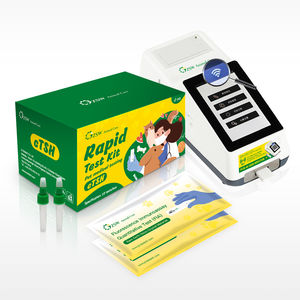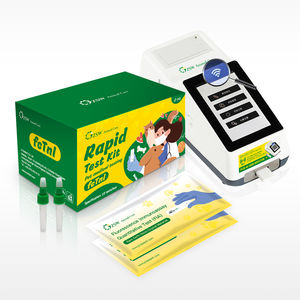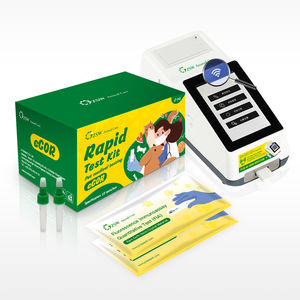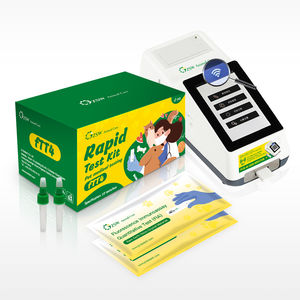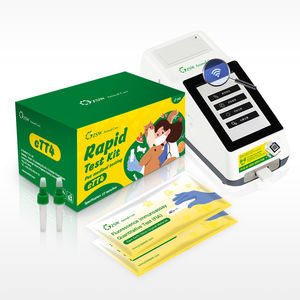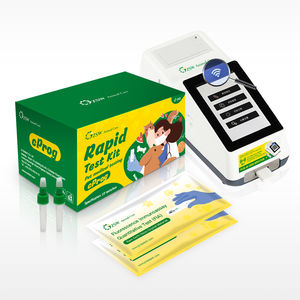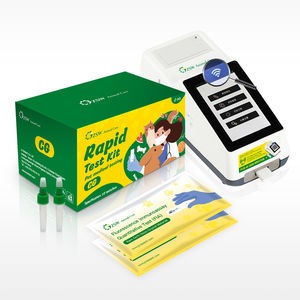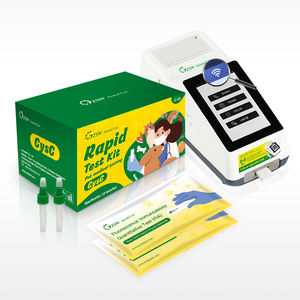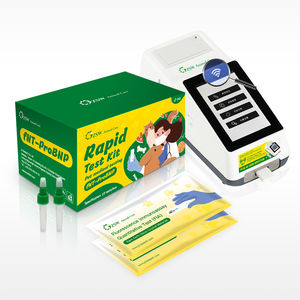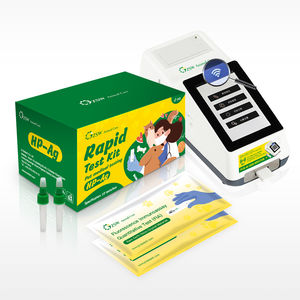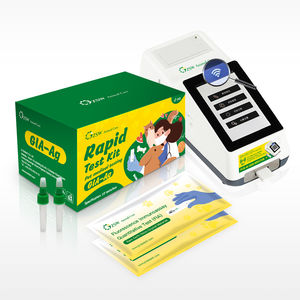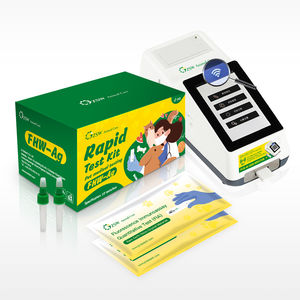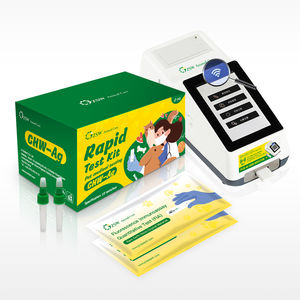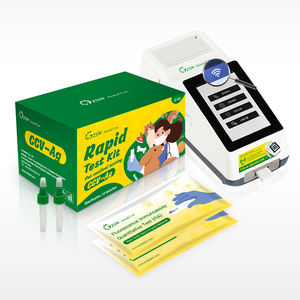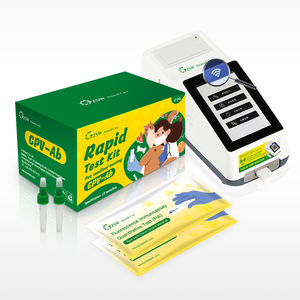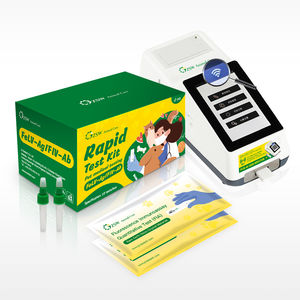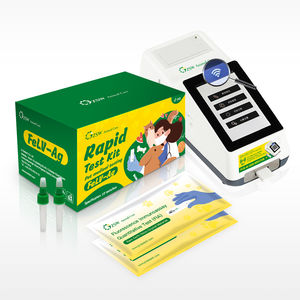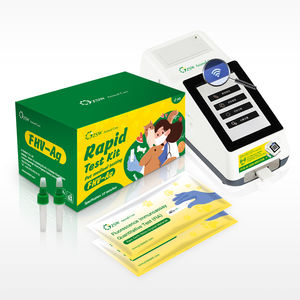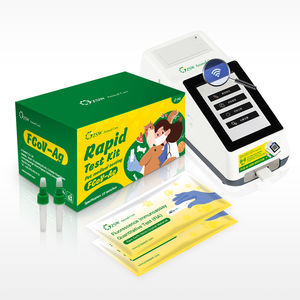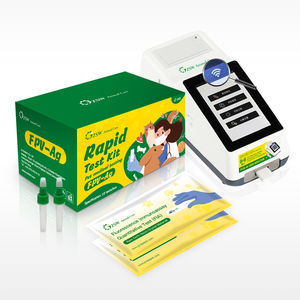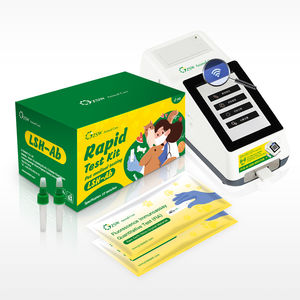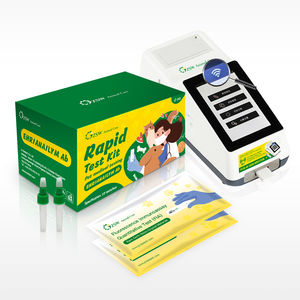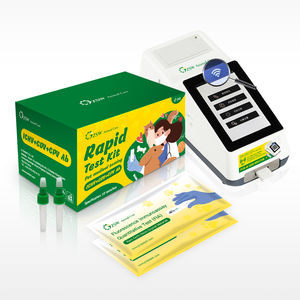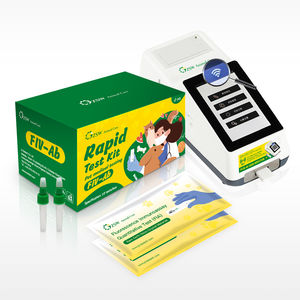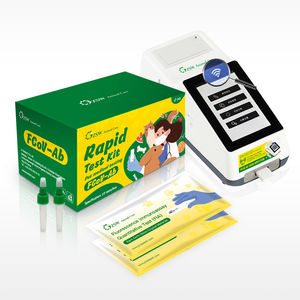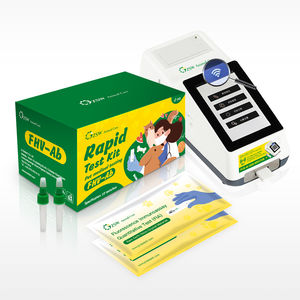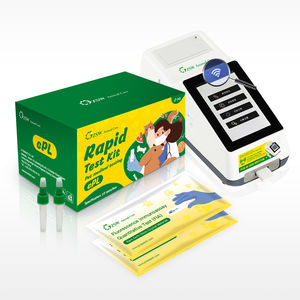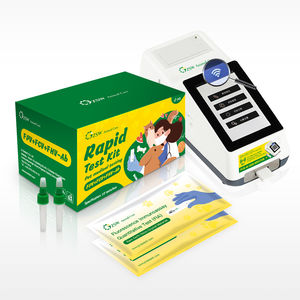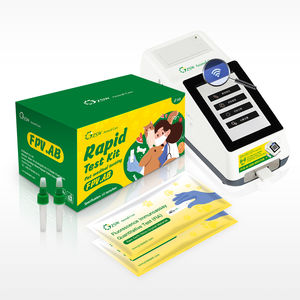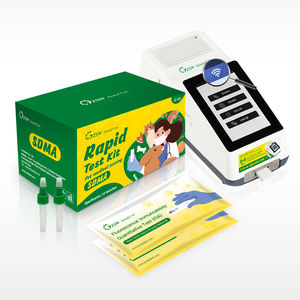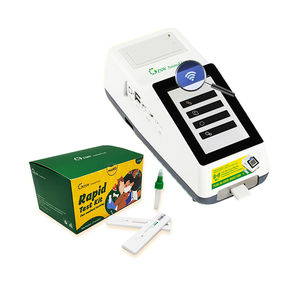
- Company
- Products
- Catalogs
- News & Trends
- Exhibitions
Pancreatic cancer test kit CPLveterinaryfor canineslipase

Add to favorites
Compare this product
Characteristics
- Applications
- for pancreatic cancer
- Application field
- veterinary
- Patient type
- for canines
- Tested parameter
- lipase
- Sample type
- serum, plasma, whole blood
- Analysis mode
- fluorescence
- Result display time
10 min
- Sample volume
0.01 ml
(0.00034 US fl oz)
Description
This product uses fluorescence immunochromatography to quantitatively detect cPL content in whole blood, serum / plasma. Basic principle: T and C lines are marked on the nitrocellulose membrane, and the T line is coated with an antibody a that specifically recognizes the cPL antigen. The binding pad is sprayed with another fluorescent nanomaterial-labeled antibody b that can specifically recognize cPL. The cPL in the sample is first combined with the nanomaterial-labeled antibody b to form a complex, which is then chromatographed upward. Combined to form a sandwich structure, when the excitation light is irradiated, the nanomaterial emits a fluorescent signal, and the strength of the signal is positively related to the cPL concentration in the sample.
Detailed
【Detection purpose】 Canine pancreatitis is an inflammatory invasive disease of the pancreas. Generally divided into acute pancreatitis and chronic pancreatitis. Acute pancreatitis shows neutrophil infiltration, pancreatic necrosis, fat necrosis around the pancreas, edema, and injury. Chronic pancreatitis shows pancreatic fibrosis and atrophy. Compared with acute pancreatitis, chronic pancreatitis is less harmful but more frequent. When a dog suffers from pancreatitis, the pancreas is damaged, and the amount of pancreatic lipase in the dog can increase sharply. At present, pancreatic lipase is one of the best specific indicators for the diagnosis of canine pancreatitis.
VIDEO
Catalogs
Related Searches
- Assay kit
- Blood assay kit
- Serum assay kit
- Immunoassay assay kit
- Plasma assay kit
- Infectious disease detection kit
- Molecular test kit
- Respiratory infection test kit
- Whole blood detection kit
- Optical assay kit
- Clinical assay kit
- Cassette assay kit
- Fluorescence assay kit
- Lateral flow test kit
- Antigen assay kit
- IgG test kit
- Cell assay kit
- Animal assay kit
- Tissue detection kit
- Antibody assay kit
*Prices are pre-tax. They exclude delivery charges and customs duties and do not include additional charges for installation or activation options. Prices are indicative only and may vary by country, with changes to the cost of raw materials and exchange rates.




